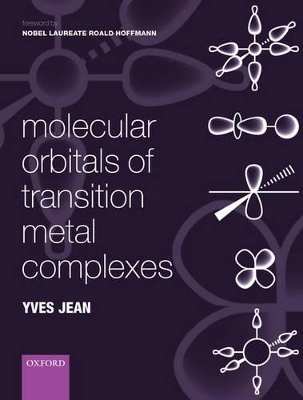
Molecular Orbitals of Transition Metal Complexes
Seiten
2005
Oxford University Press (Verlag)
978-0-19-853093-0 (ISBN)
Oxford University Press (Verlag)
978-0-19-853093-0 (ISBN)
This book starts with the most elementary ideas of molecular orbital theory and leads the reader to an understanding of the electronic structure, geometry and reactivity of transition metal complexes. The pedagogical aim is to give the student a theoretical method of analysis which relies on some simple ideas (symmetry and overlap), applicable to problems of varying complexity.
This book starts with the most elementary ideas of molecular orbital theory and leads the reader progressively to an understanding of the electronic structure, geometry and, in some cases, reactivity of transition metal complexes. The qualitative orbital approach, based on simple notions such as symmetry, overlap and electronegativity, is the focus of the presentation and a substantial part of the book is associated with the mechanics of the assembly of molecular orbital diagrams.
The first chapter recalls the basis for electron counting in transition metal complexes. The main ligand fields (octahedral, square planar, tetrahedral, etc.) are studied in the second chapter and the structure of the "d block" is used to trace the relationships between the electronic structure and the geometry of the complexes. The third chapter studies the change in analysis when the ligands have pi-type interactions with the metal. All these ideas are then used in the fourth chapter to study a series of selected applications of varying complexity (e.g. structure and reactivity). The fifth chapter deals with the "isolobal analogy" which points out the resemblance between the molecular orbitals of inorganic and organic species and provides a bridge between these two subfields of chemistry. The last chapter is devoted to a presentation of basic Group Theory with applications to some of the complexes studied in the earlier chapters.
This book starts with the most elementary ideas of molecular orbital theory and leads the reader progressively to an understanding of the electronic structure, geometry and, in some cases, reactivity of transition metal complexes. The qualitative orbital approach, based on simple notions such as symmetry, overlap and electronegativity, is the focus of the presentation and a substantial part of the book is associated with the mechanics of the assembly of molecular orbital diagrams.
The first chapter recalls the basis for electron counting in transition metal complexes. The main ligand fields (octahedral, square planar, tetrahedral, etc.) are studied in the second chapter and the structure of the "d block" is used to trace the relationships between the electronic structure and the geometry of the complexes. The third chapter studies the change in analysis when the ligands have pi-type interactions with the metal. All these ideas are then used in the fourth chapter to study a series of selected applications of varying complexity (e.g. structure and reactivity). The fifth chapter deals with the "isolobal analogy" which points out the resemblance between the molecular orbitals of inorganic and organic species and provides a bridge between these two subfields of chemistry. The last chapter is devoted to a presentation of basic Group Theory with applications to some of the complexes studied in the earlier chapters.
Yves Jean is Professor at University Paris-Sud (Orsay, France) and Researcher at Ecole Polytechnique (Palaiseau, France).
1. Setting the scene ; 2. Principal ligands fields: sigma interactions ; 3. Pi-type interactions ; 4. Applications ; 5. The isolobal analogy ; 6. Elements of group theory and applications
| Erscheint lt. Verlag | 24.3.2005 |
|---|---|
| Übersetzer | Colin Translated by: Marsden |
| Zusatzinfo | numerous tables and line drawings |
| Verlagsort | Oxford |
| Sprache | englisch |
| Maße | 195 x 253 mm |
| Gewicht | 721 g |
| Themenwelt | Naturwissenschaften ► Chemie ► Analytische Chemie |
| Naturwissenschaften ► Chemie ► Anorganische Chemie | |
| Naturwissenschaften ► Chemie ► Physikalische Chemie | |
| ISBN-10 | 0-19-853093-5 / 0198530935 |
| ISBN-13 | 978-0-19-853093-0 / 9780198530930 |
| Zustand | Neuware |
| Informationen gemäß Produktsicherheitsverordnung (GPSR) | |
| Haben Sie eine Frage zum Produkt? |
Mehr entdecken
aus dem Bereich
aus dem Bereich


